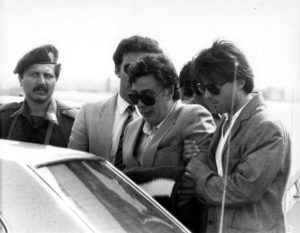Heroin has always been a profitable business whether it’s organized or not. A person can invest a simple $1500 (I’m told) and have a turnaround profit of over $15,000 in less than two weeks, again the streets are talking not me. With that hypothetical assumption lingering, one can see the enticement for the average street pharmacist to take a chance. The best example of how profitable the heroin trafficking business can be one only needs to examine the layout of The Pizza Connection.
Now in summary, the pizza connection was a mob hustle to sell a mass amount of heroin and cocaine (mainly heroin) in the U.S. The reality is this adventure was so much more sophisticated and clever that till this day it sets the standard for elaborate schemes and should’ve received an award for absolute brilliance! Strategically, the operation got its roots from Carmine Galante. Galante was not the first mobster to deal with drugs, however, I feel he was the one who laid the foundation of how to make it a profitable empire (in regards to the Pizza Connection).
The problem with Galante was he got greedy and forgot where he came from. When you lose track of the fundamentals and think you’re untouchable reality will confirm that “If history has taught us anything it’s that anyone can be killed- Michael Coleone. (Sorry I had to do it) Nevertheless after Galante’s murder, Salvatore Catalona became the Bonanno family’s newest profitable asset. Catalona was born in Palermo Sicily and lived there until he was in his early 20s. By 1966, Catalona and his family were living in America and Catalona began making moves for the Bonanno family.
His value was in his roots. Catalona had an advantage by being born in Sicily because he could help the family keep the lines of communication open with the old country and in addition, help break in on the ground floor of lucrative operations. As with any overseas partnership everyone had a responsibility. As it goes, the Sicilian mob would be in charge of importing the raw material from Pakistan and Turkey. In addition, the Sicilian mob would also have the narcotics manufactured in Sicily. From there, the drugs were shipped into the U.S. where the American mob would take over and help the Sicilian immigrants (who were being imported over by the Bonanno family) sell the drugs.
Once sold, the American mob would launder the money through Swiss Bank accounts where it was held until the money could be converted into Italian lira and deposited into banks owned by Italian drug lords. When Gaetano Badalamenti entered the picture, he was already an established and successful heroin trafficker. In fact, Badalamenti was at the top of his game and his success permitted him absolute power in all things mafioso. Of course, like any other successful man in his chosen profession his accomplishments made him the envy among his contemporaries. By 1981, a renegade sec of the Sicilian mob declared war on Badalamenti and all his supporters. In all, around 450 murders occurred during the power struggle and Badalamenti (being on the losing end) was forced to leave Italy for his own safety. After escaping to Brazil, Badalamenti resumed drug smuggling with his old allies and in addition, he made partners with new associates in America… The Bonanno lieutenant Salvatore Catalona. Unfortunately, the FBI and Italian law enforcement had made a treaty to work together in hopes of ending the operation. The only problem was the authorities didn’t know the location of Badalamenti. In 1984, the feds got the break they were hoping for when agents intercepted a phone call Badalamenti made to his cousin. Within (around) 36 hours of the call Badalamenti was arrested and in the coming days the other participants in the pizza connection on both the Atlantic. In March of 1982, all but one of the defendants were found guilty.
[si-contact-form form=’3′]

 July 17th, 2017
July 17th, 2017  CEO
CEO 
 Posted in
Posted in  Tags:
Tags: 



